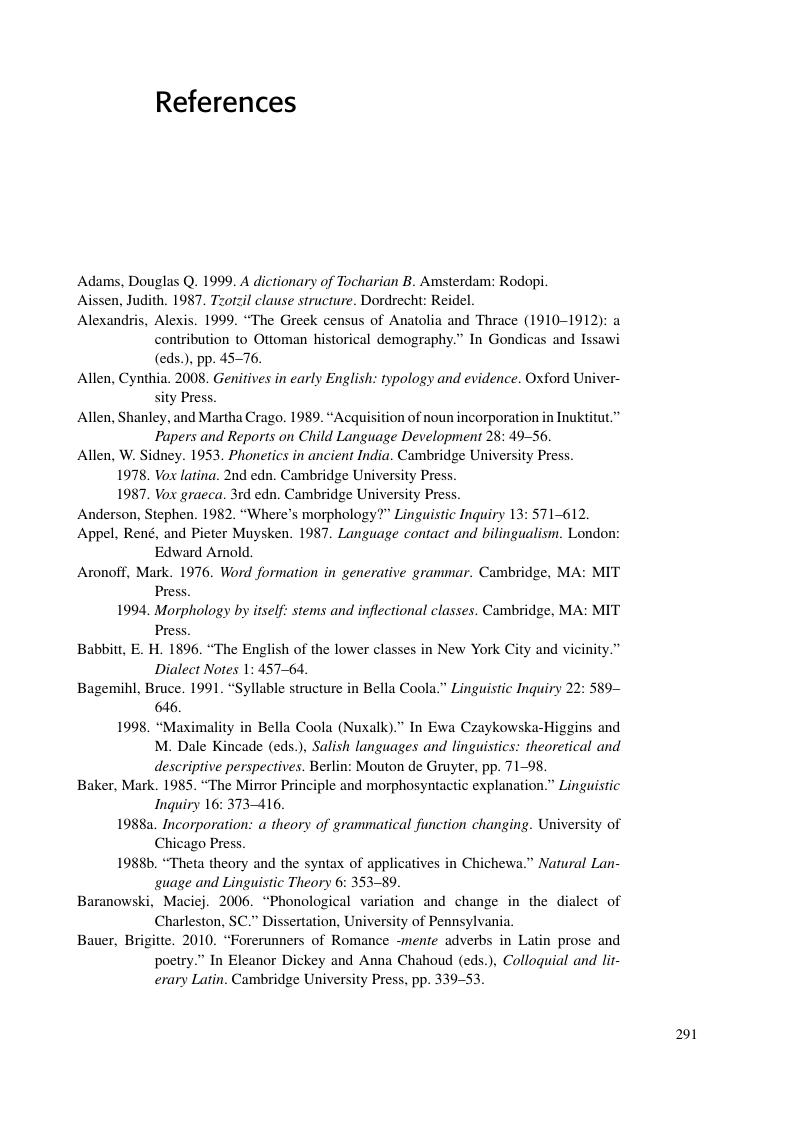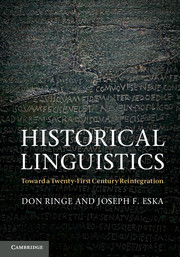Book contents
- Frontmatter
- Contents
- Figures
- Tables
- Preface
- Acknowledgments
- Introduction
- 1 The nature of human language and language variation
- 2 Language replication and language change
- 3 Language change in the speech community
- 4 Language contact as a source of change
- 5 Sound change
- 6 The evolution of phonological rules
- 7 Morphology
- 8 Morphological change
- 9 Syntactic change
- 10 Reconstruction
- 11 Beyond comparative reconstruction
- Appendix: Recovering the pronunciation of dead languages: types of evidence
- References
- General index
- Index of languages and families
- References
References
Published online by Cambridge University Press: 05 February 2013
- Frontmatter
- Contents
- Figures
- Tables
- Preface
- Acknowledgments
- Introduction
- 1 The nature of human language and language variation
- 2 Language replication and language change
- 3 Language change in the speech community
- 4 Language contact as a source of change
- 5 Sound change
- 6 The evolution of phonological rules
- 7 Morphology
- 8 Morphological change
- 9 Syntactic change
- 10 Reconstruction
- 11 Beyond comparative reconstruction
- Appendix: Recovering the pronunciation of dead languages: types of evidence
- References
- General index
- Index of languages and families
- References
Summary

- Type
- Chapter
- Information
- Historical LinguisticsToward a Twenty-First Century Reintegration, pp. 291 - 308Publisher: Cambridge University PressPrint publication year: 2013



